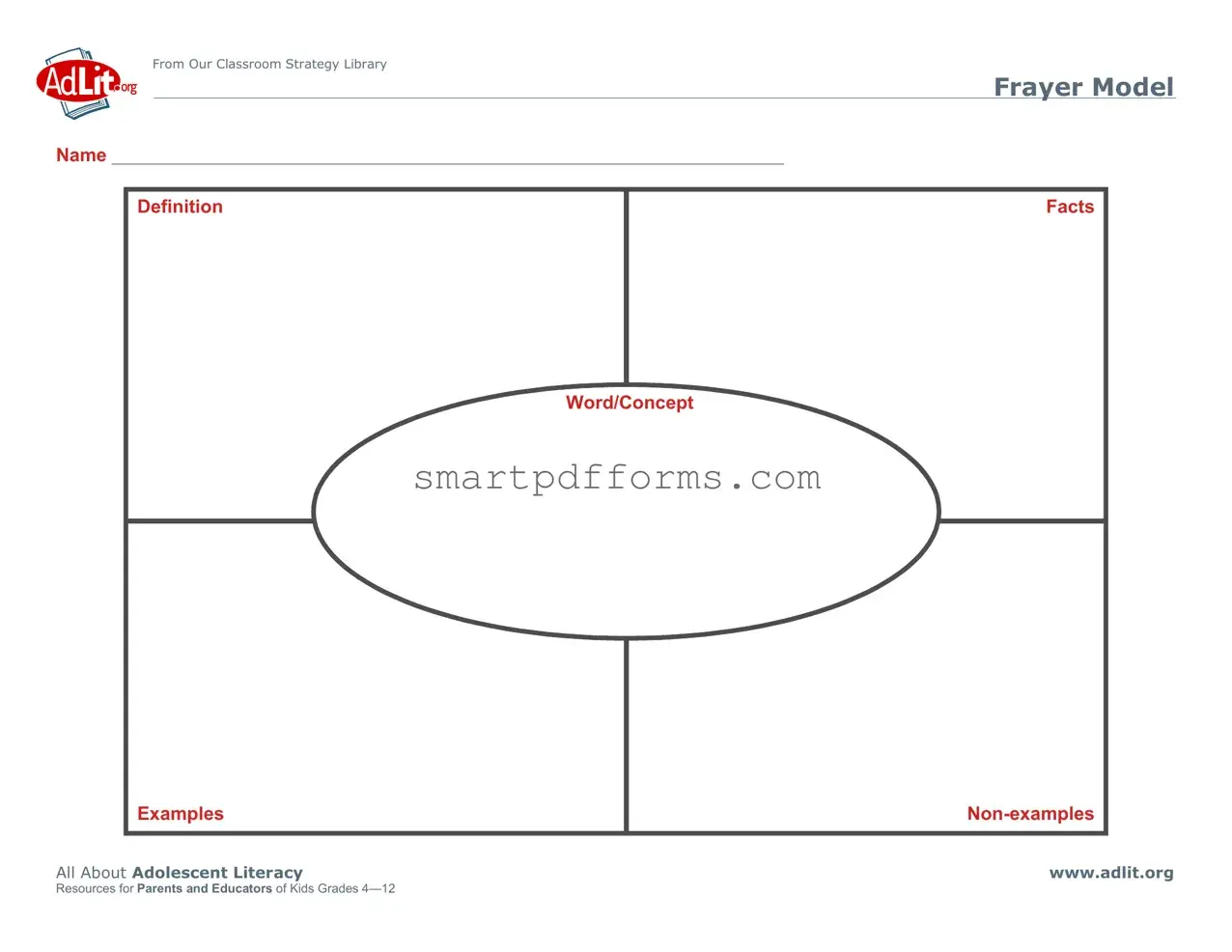In the realm of educational strategies, the Frayer Model stands out as a distinguished tool aimed at enhancing the understanding and retention of new concepts and vocabulary. Originating from our Classroom Strategy Library, this approach delineates a quadrant-based format that breaks down the learning process into comprehensive parts: Name, Definition, Word/Concept, Examples, and Non-examples. Specifically designed to bolster literacy among adolescents, this editable form is an invaluable resource for both parents and educators navigating the academic development of students in grades 4 through 12. Through its structured framework, the Frayer Model facilitates a deeper engagement with new terms, allowing learners to explore and define words in a multifaceted manner that includes not just the definition, but also its application and boundaries. By incorporating examples and non-examples, it uniquely positions learners to critically distinguish between what a concept is and what it is not, thereby promoting a more nuanced understanding. Suitable for a wide array of subjects, this editable form is tailored to meet the dynamic needs of an educational setting, ensuring that learning is both accessible and effective.

